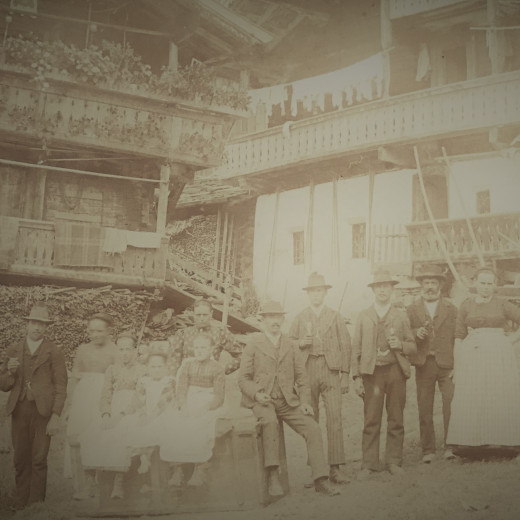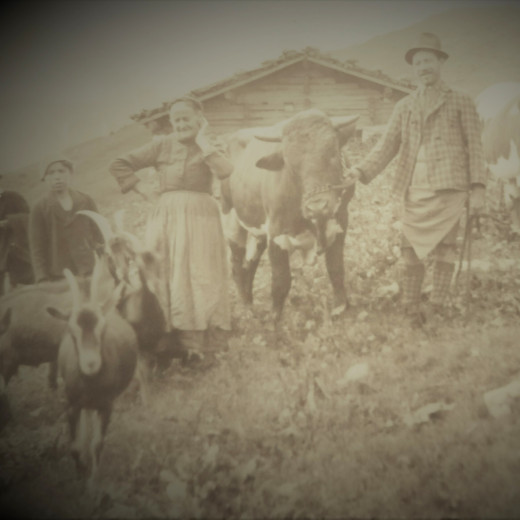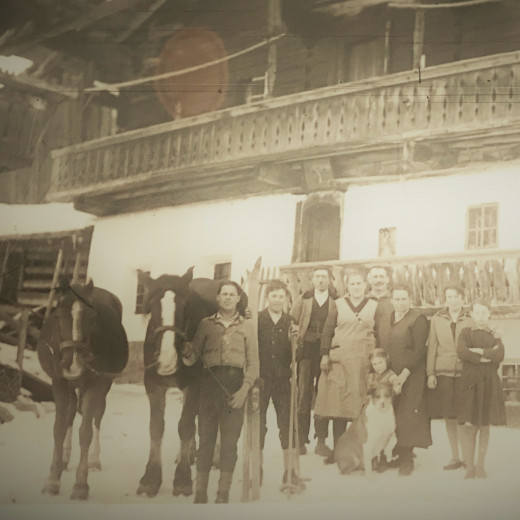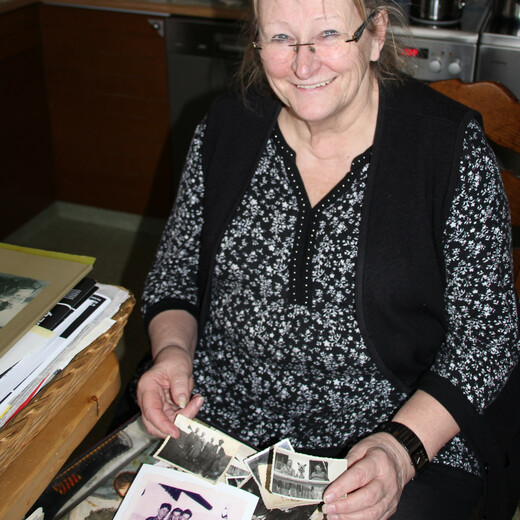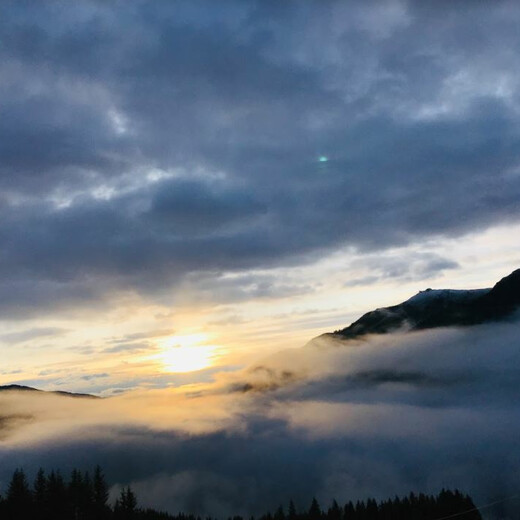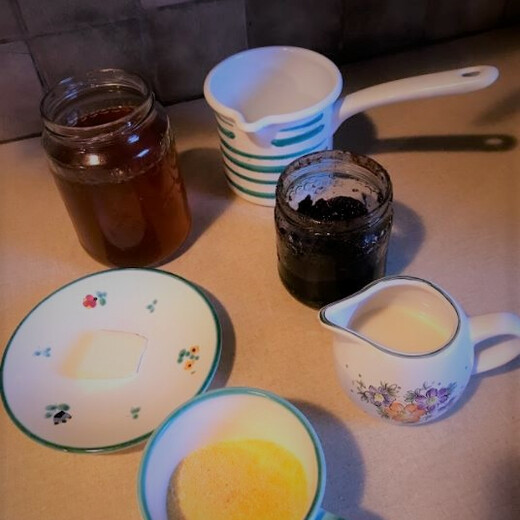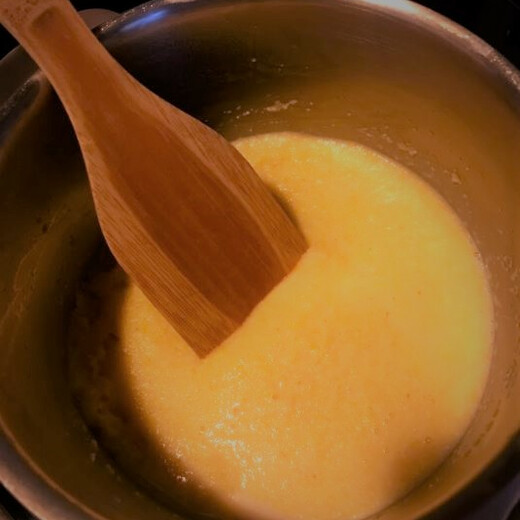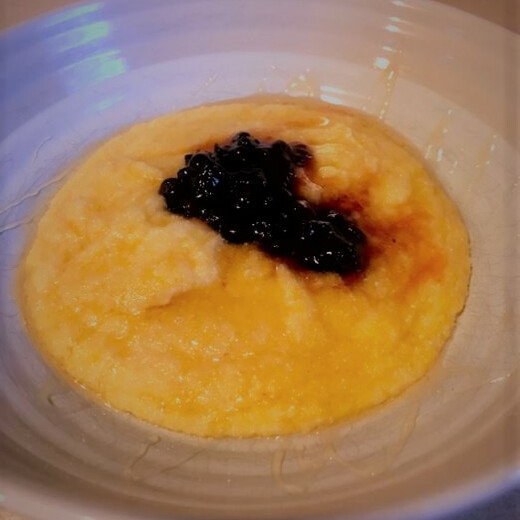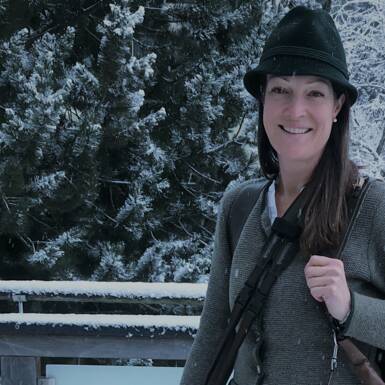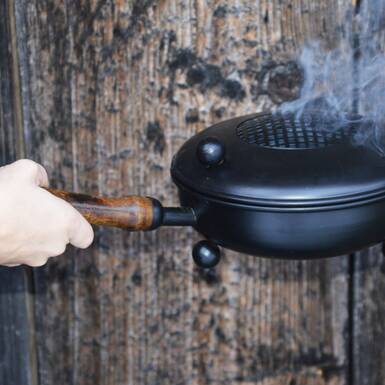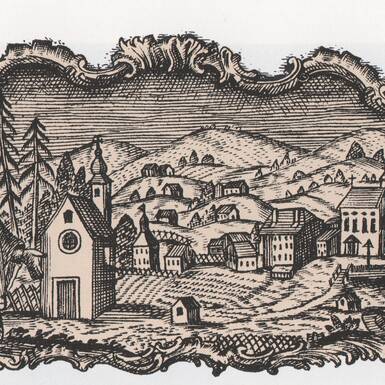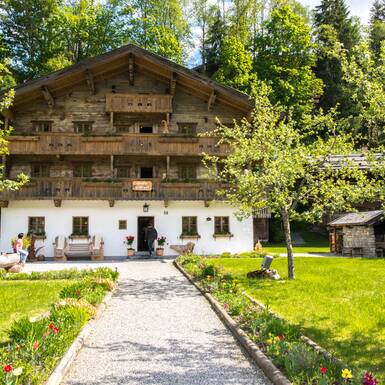- Traditions
Customs and Rituals in the Alps around “Candlemas”
The time around Candlemas at the start of February is considered the threshold from winter to spring. Although the Glemm Valley has a bracing climate due to its location of over 1,000 metres above sea level and surrounded by Alpine mountains, the snow remains for longer than in warmer areas. The first shoots already begin to sprout deep in the earth at this time. It was not without reason that "Candlemas" was considered the new year’s actual start in days gone by when the landscape around Saalbach Hinterglemm was still predominantly characterised by farming. For the servants, the time around " Candlemas" was a very special one. For this article, I talked to a woman who still remembers the servants and maids on the farm well and shares one or two funny incidents and a few pictures from her family's collection.
The origins of "Candlemas" - the Celtic "Imbolc"
When the Europe of today was inhabited by Celts, Germanic tribes, and European forest folk, it was vital for the people to closely observe nature to survive. Cycles were recorded, and oracles were created to properly manage supplies and the workload. The time around Imbolc is perceived as a time of awakening, germination, and new beginnings. With a profound bond to nature, a variety of annual festivals were celebrated. The Imbolc festival probably took place during the waxing moon phase at the beginning of February. A waxing moon has long symbolised growth.
The name "Imbolc" likely derives from the meaning "in the womb or belly of the mother" and refers to the growing seed in the womb of Mother Earth. This festival was primarily dedicated to the Goddess Brigid, the so-called "Goddess of Light", known as the primaeval Celtic Mother of all Irish Gods, and has been worshipped since the Neolithic Age. Brigid was said to bring new life to the land. She appeared in a white, virginal form, where her feet touched the earth, the season of the spring started.
To honour the goddess and new beginnings, Imbolc is celebrated as the first festival in the new cycle. Several traditions and rites are performed - Brigid crosses, which stand for good luck and blessings, are woven, and cleansing rituals performed to emerge purified into the new season. People walked in the fields and shook the trees to awaken nature. The old year is banished for good. It was smoked and driven away with loud drumming. Many folks also wore colourful, cheerful masks at this time to chase away the evil, cold winter spirits. By the way, this custom also gave rise to our present-day carnival, but that's another story.
Candlemas - a Christian festival of great significance for the farming community
Candlemas was celebrated 40 days after Christmas and can be traced back to a Jewish custom. The Christian church festival as we know it was probably established in the 4th century. Since the 6th century, it is celebrated annually on the 2nd of February. This day is formerly regarded as the concluding day of the Christmas season. The Christmas trees and the nativity scenes are cleared away from the houses and the new working year of the farmers and servants commenced. Candlemas became an important day for the oracle of the weather. As many people were unable to read and write, numerous rules and traditions were passed on orally and made them easier to remember, in the form of rhymes. Some farmers' practices are still preserved, such as the saying:
- "If it is bright and clear at Candlemas, it will be a long winter, but if it snows and is stormy, spring is not far off."
- "If it is clear and bright at Candlemas, Spring will not come so quickly."
- "Candlemas in clover - Easter in snow."
- "A cloudy Candlemas is held dear by the farmer."
Candlemas as fix mark in the calendar
As the 2nd of February was the start of the new working year for farmers, it was on Candlemas that the decision was made as to who of the servants would stay on the farm for a further year and which employees would change jobs. The farming year for maids and farmhands began with three days off: Candlemas - at the same time payday, Blasius Day, and Schlenker Day. On these days, the "servants" had a holiday. Anyone who changed jobs had to pack up their belongings and set off to their new employment, at the latest on Schlenker Day, after they had received their wages for the work they had completed. The compensation for farmhands and maids often consisted only of a few articles of clothing and a small amount of money.
Searching for work was different from today. As early as summer and autumn, farmhands looking for a new job would put a wooden spoon on their hats while going to church. This was an indication that the farmhand was ready to take up another job in the new year.
The hard life of maids and farmhands
Maids' and farmhands' lives were often tough and austere. Children from families with many children and farmers' children who were not appointed as heirs had no choice but to seek employment as servants.
In the Glemm Valley, the number of servants steadily decreased as tourism, and the introduction of technology and machines took hold. Irmgard Macher, born in 1948 as the daughter of the farmers at the "Eibinghof", still remembers one or two farmhands who helped the family with their work. The "Eibinghof" is considered one of the oldest estates in the Glemm Valley. The first documented reference to it was in 1222 when Archbishop Eberhard II confessed that his ministerial, Burggraf Konrad, bequeathed the benefit of several named estates in the Glemm Valley, including Krumpfeuchten (today's Eibing) and others, to the monastery of St. Peter as a fiefdom with the consent of the archbishop. From 1366 onwards, the names "Eibing", "Lederer" and "Seigen" appear in connection with Krumpfeuchten. *
"As my father died at a very early age, we urgently needed helping hands on the farm. Various farmhands helped with stable work, woodwork and working in the fields. The last farmhands said goodbye in the 60s. The times changed, and the structure on the farms changed with the arrival of tourism. Each servant had his/her particular job. The farmhands slept in the 'Buamakoma' (boys' chamber) and the maids in the secluded 'Dirnakoma' (Dirndl = girls' chamber). In between was the 'Sche-Koma' (beautiful chamber), which was the bedroom of the farmer and his wife. Each had a bed, a chair, and a chest in which their belongings were kept. This wooden box is called the 'Schlenker chest' because it was taken away on Schlenker day if the farmhands and maids moved on," says "Eibing Irmi", as the locals know her.
Irmgard recalls many of the experiences. For example, when she did not want to go home from school alone during the "Krampus season" and the farmhand came to fetch her from the bus with a horse and carriage. Or that a "Neil" (little kiss) was to be expected as a reward for bringing food to the men in the field or working in the forest. Unfortunately, one could not always choose who delivered the reward.
Other Candlemas traditions, some of which are still practised today, are for example
• Consecration of candles and Blessing of the Throats (in the church)
• Candlemas blessing (Candlemas flame is carried from house to house)
• Blessing of light for homes and farms by walking from each house/farm with consecrated, burning candles.
• Purification of houses and farms (airing) and burning of incense
• And many more
An old recipe for a new era
People often feel connected to old customs and traditions and want to rekindle them. In many places, sweet semolina porridge is prepared around Candlemas, just as it was in days long gone.
- Heat 500 ml milk with
- 2 tablespoons of honey, then add
- 60 g semolina (wheat or maize). Bring briefly to the boil, remove from the heat, and leave to thicken.
Add a little butter, honey, and fruit puree from the previous autumn and the porridge tastes delightfully sweet. This dish is regarded as nourishment for body, mind, and soul. This traditional dessert is also put on a dish and placed in front of the door as an "offering" to the Goddess Brigid and the forthcoming, vibrant season.
Bon Appétit, enjoy!
* Source of reference: Heimatbuch Saalbach Hinterglemm, Siegfried Weitlaner. Side 45, 1st paragraph.

